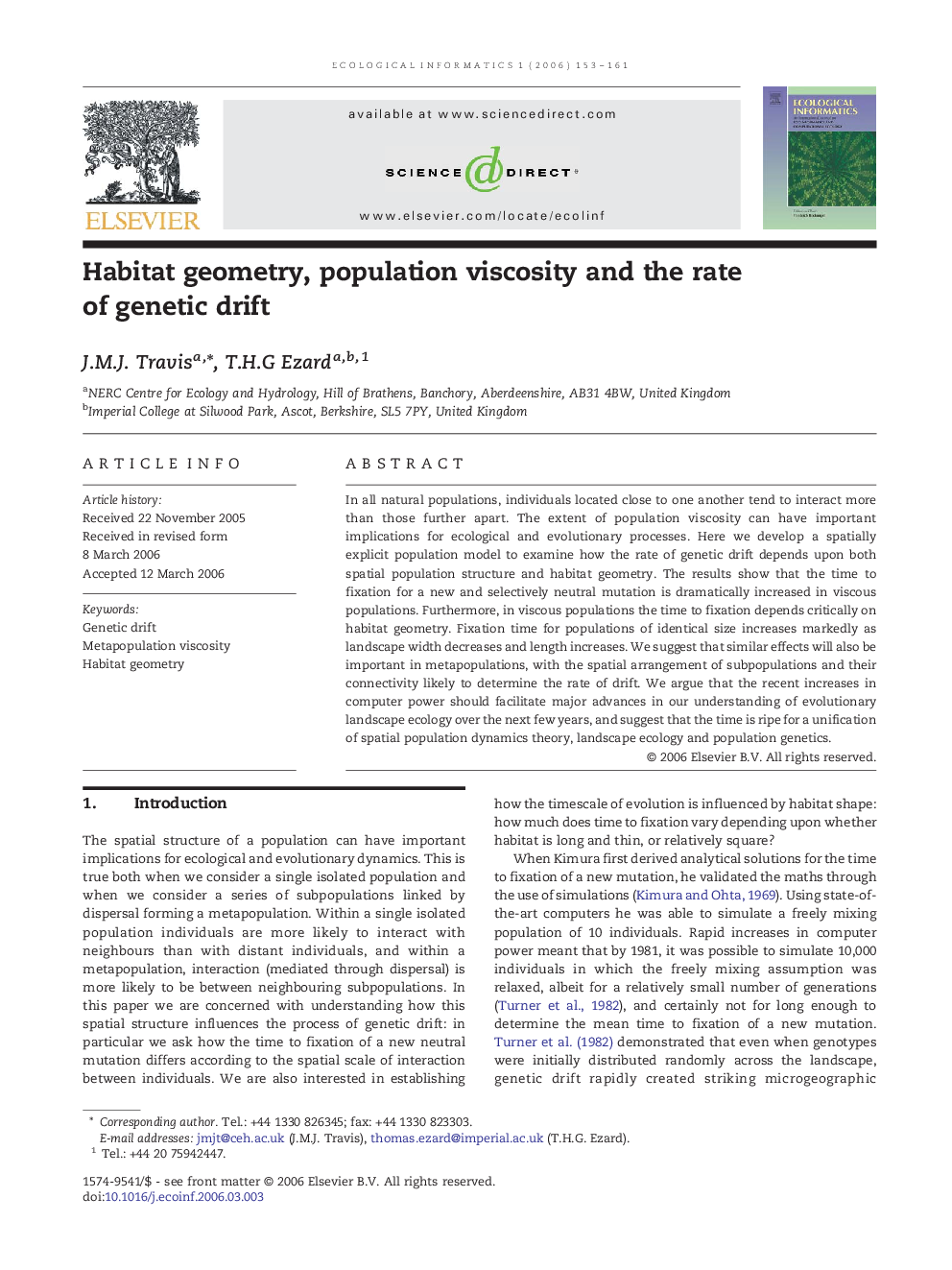| Article ID | Journal | Published Year | Pages | File Type |
|---|---|---|---|---|
| 4375289 | Ecological Informatics | 2006 | 9 Pages |
Abstract
In all natural populations, individuals located close to one another tend to interact more than those further apart. The extent of population viscosity can have important implications for ecological and evolutionary processes. Here we develop a spatially explicit population model to examine how the rate of genetic drift depends upon both spatial population structure and habitat geometry. The results show that the time to fixation for a new and selectively neutral mutation is dramatically increased in viscous populations. Furthermore, in viscous populations the time to fixation depends critically on habitat geometry. Fixation time for populations of identical size increases markedly as landscape width decreases and length increases. We suggest that similar effects will also be important in metapopulations, with the spatial arrangement of subpopulations and their connectivity likely to determine the rate of drift. We argue that the recent increases in computer power should facilitate major advances in our understanding of evolutionary landscape ecology over the next few years, and suggest that the time is ripe for a unification of spatial population dynamics theory, landscape ecology and population genetics.
Keywords
Related Topics
Life Sciences
Agricultural and Biological Sciences
Ecology, Evolution, Behavior and Systematics
Authors
J.M.J. Travis, T.H.G Ezard,
